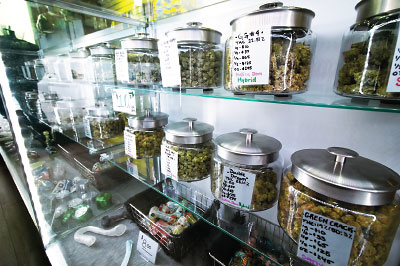How to Talk With Patients Interested in Cannabis
Abstract
Psychiatrists can help patients who seem intent on using cannabis by educating them about steps to do so safely, a speaker at the Annual Meeting suggested.

A patient comes to you who is interested in using cannabis or CBD (cannabidiol extract) to help reduce symptoms of a psychiatric disorder or another medical condition. How should you respond?
During a comprehensive two-part session on the history, biology, therapeutic applications, and potential harms of cannabis at APA’s Annual Meeting, Henry Levine, M.D., pointed to numerous studies that suggest people with psychiatric issues should be steered away from these substances. Levine is a clinical professor of psychiatry at the University of Washington.
He noted that while there are enough promising data to warrant continued research into medical cannabis products for some conditions, there are unproven benefits but real risks to using these products as a treatment, including addiction or emergent psychosis in younger users. According to Levine, 25% of people with a psychiatric illness who use cannabis go on to develop cannabis use disorder, compared with 9% of the general population.
All conversations with patients about cannabis should begin with active listening, Levine said. What symptoms is the patient hoping to alleviate with cannabis? For example, is she trying to lower anxiety? Reduce pain? Stimulate appetite?
“It is important that we first listen to the patient and defer judgment,” he said. Once the psychiatrist understands the why, he or she can more accurately present the evidence and risks related to the patient’s history. Levine noted, for example, that cannabis can be a potent immunosuppressant, so it can be very risky in some cancer patients.
There will be patients who decide they want to try cannabis and/or CBD anyway, Levine noted, and psychiatrists should educate these patients about ways to do so safely. For instance, physicians might encourage patients to use cannabis only when nothing important is on the horizon; that is, don’t take it before going to work or school, he said. Psychiatrists should also encourage patients to take breaks from use to avoid becoming recreational users. Patients should also be aware of potential legal consequences, such as loss of employment despite having a cannabis authorization card if they fail a drug screen.
Some other helpful harm-reduction tips include telling patients the following:
Avoid synthetic cannabinoids.
Use high CBD/low THC marijuana strains.
Do not mix cannabis with other substances, particularly alcohol or benzodiazepines.
Store all cannabis under lock and key so kids and pets cannot access.
Use of water pipes does not reduce the amount of smoke intake, only the temperature.
Do not share joints, pipes, or other vaping devices.
Though numerous CBD products including edibles, oils, and soaps are legal, available over-the-counter, and reportedly safe, Levine cautioned that CBD products are poorly regulated and pose numerous health risks. In particular, some laboratory analyses have found the basic requirement of legal CBD supplements—that THC levels must be below 0.3%—are not met 21% of the time. This could pose problems for some people who get drug tested, as their samples will turn up positive. Other purity factors are that hemp (the term for low THC cannabis plants) readily absorbs heavy metals from the soil, and many companies don’t adequately remove these toxic metals.
Levine offered some steps to help patients choose safer CBD products:
Look for something sourced in the European Union (EU) if possible, since the EU has stronger CBD regulations than the United States.
Look for products where CBD was extracted using carbon dioxide and not organic solvents.
Choose organic CBD products since those presumably were not exposed to pesticides.
Verify that the manufacturer follows the FDA’s Current Good Manufacturing Processes.
For psychiatrists who are willing to go one step further, Levine suggested they could visit a couple of local cannabis dispensaries with good reputations and let the staff teach them about their products, so the psychiatrist may be able to offer more specific guidance on strains to avoid and safer alternatives.
“Remember that our patients are more susceptible to the harms of this product,” Levine concluded. “And one part of our job is to reduce that harm as best we can.” ■



